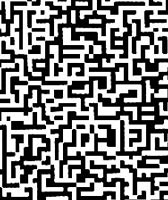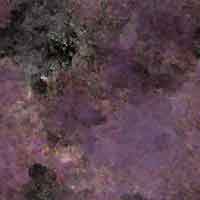| 
(Detail; click for
complete image.) |
Béla
Julesz: Computer Graphic, 1965.
Julesz used random black & white grids in his psychological research
on stereopsis. The piece illustrated here looks as if it may have been
derived from such a random pattern by one or two applications of a simple
voting rule. Julesz displayed this piece in an early computer art show
(Howard Wise Gallery, New York, 1965), though he denies any artistic intention.
Assignment
[Art History students]: Reconstruct the 1965 show by Kenneth
Knowlton and Béla Julesz at the Howard Wise Gallery. Find
descriptions of how this piece (and other, similar pieces) came
about.
Assignment [Computer Science students]: Experiment with
Cellular Automata which yield this kind of pattern from a random
initialization. Devise tests which characterize this kind of pattern
and apply them to the results of the Cellular Automata. |
|

